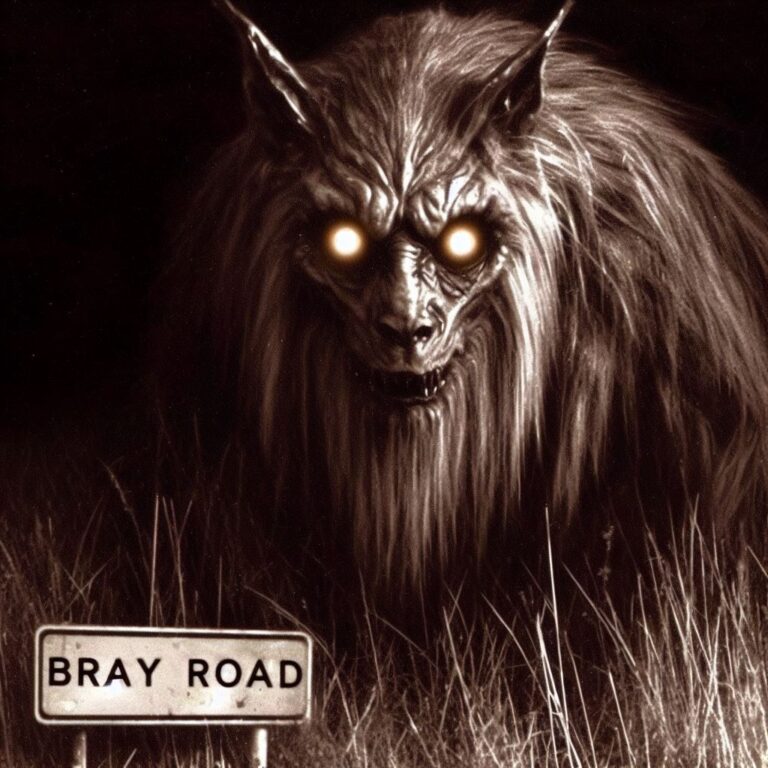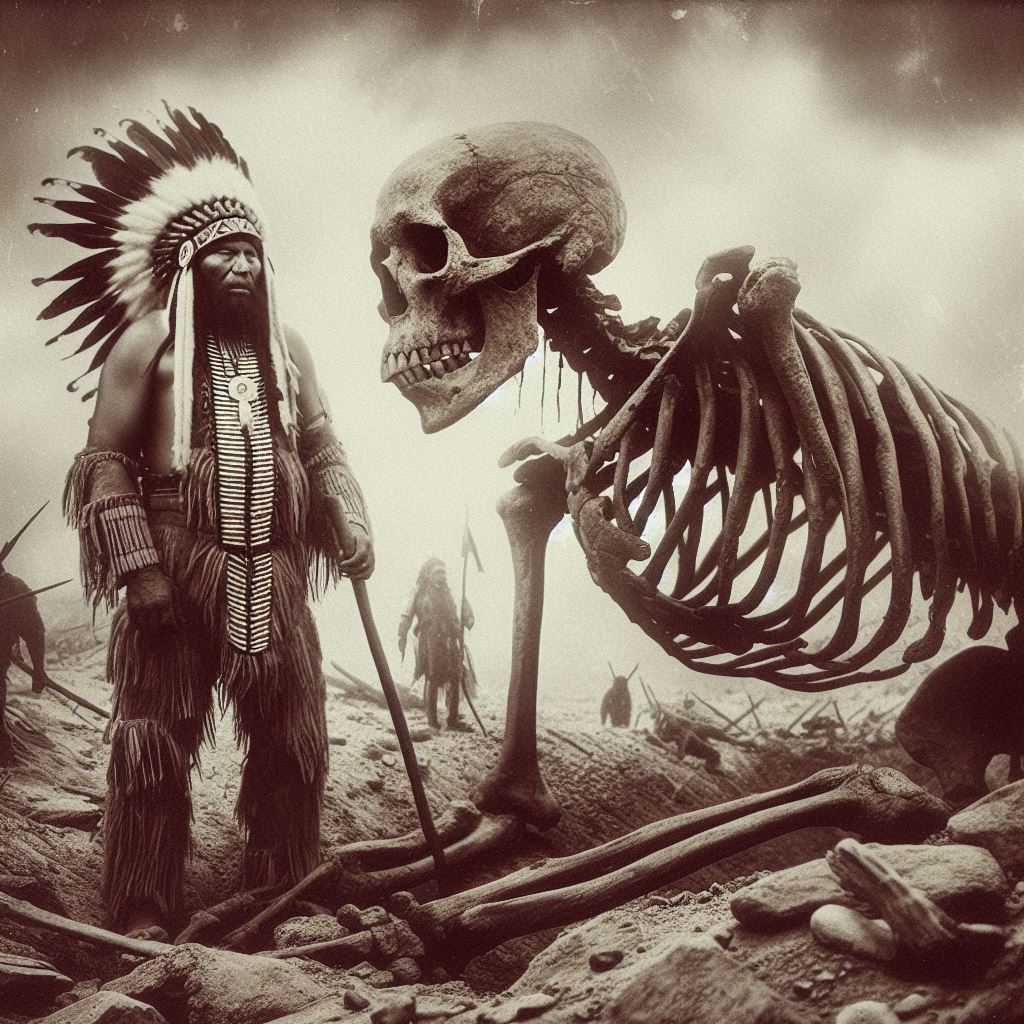
For centuries, Native American legends have captivated the imagination with tales of enigmatic beings known as the “White Giants.” These towering figures, often depicted as pale-skinned and physically imposing, have played significant roles in the folklore and cultural traditions of various indigenous tribes across the Americas.
One intriguing theory suggests that these White Giant narratives may have their roots in ancient encounters with a real-life population of archaic humans – the Neanderthals.
In this article, we delve into the fascinating intersection of Native American mythology and the field of human evolution, exploring the hypothesis that the White Giants of indigenous lore could be representations of Neanderthal ancestry.
Drawing from diverse sources, including Native American Folklore and Neanderthal DNA studies, we unravel the threads connecting these seemingly disparate narratives and scientific discoveries.
ads content
Native American Folklore and the White Giants
The tales of the White Giants have been woven into the tapestry of indigenous cultures across North and South America, transcending boundaries and linguistic barriers.
From the Choctaw and Cherokee nations in the east to the Paiute and Zuni tribes in the west, these legends have captivated generations with their vivid depictions of beings that stand apart from ordinary humans.
Physical Descriptions and Cultural Significance
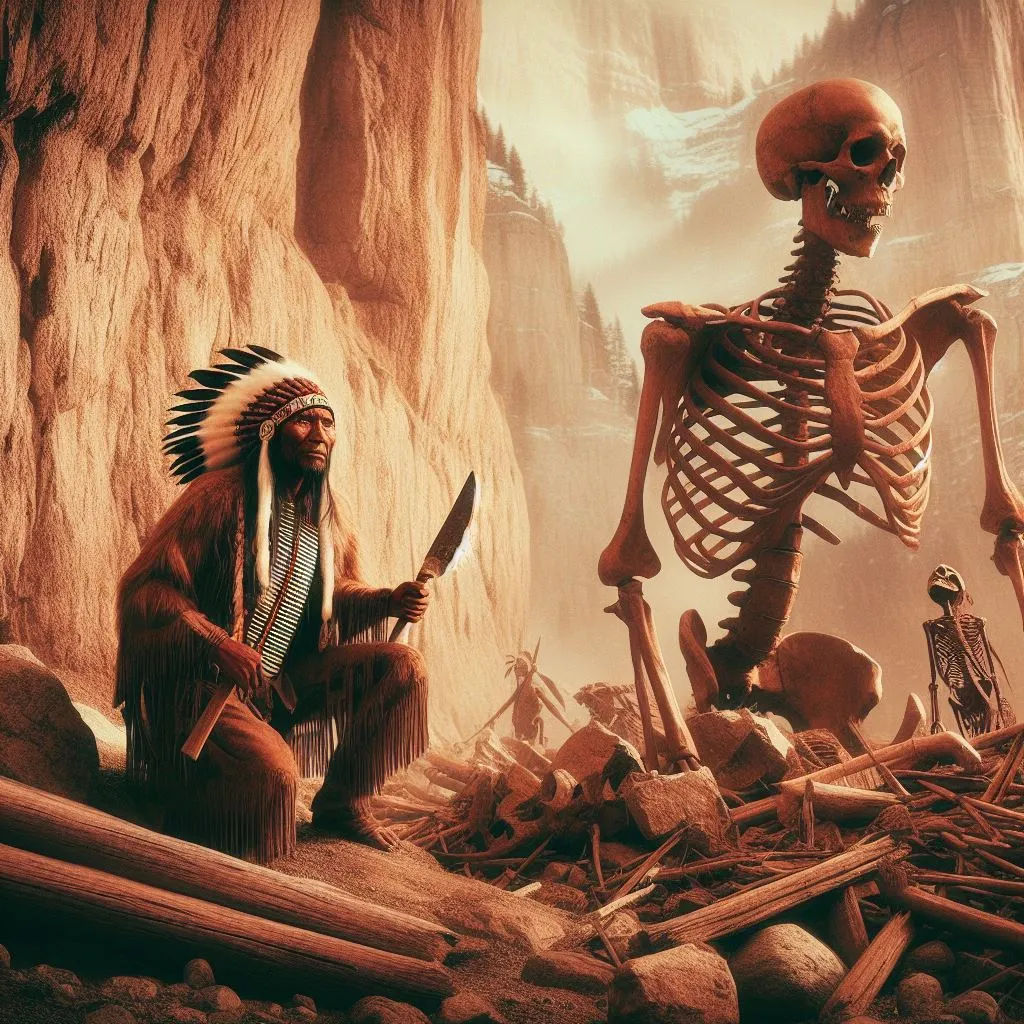
According to Native American legends, the White Giants were characterized by their towering stature, sometimes reaching heights of over seven feet. They were often described as having pale skin, robust builds, and distinctive facial features, such as prominent brow ridges and elongated skulls.
Beyond their physical attributes, these beings were frequently portrayed as possessing extraordinary strength, cunning, and, in some accounts, even supernatural abilities.
The cultural significance of the White Giants varied among different tribes, but they were commonly associated with:
- Ancestral heritage: Some tribes believed the White Giants to be their primordial ancestors or the original inhabitants of the land.
- Spiritual guardians: Others revered them as powerful protectors or entities with divine connections.
- Cautionary tales: The stories sometimes served as warnings about the consequences of challenging or angering these formidable beings.
Neanderthal Ancestry and Genetic Evidence
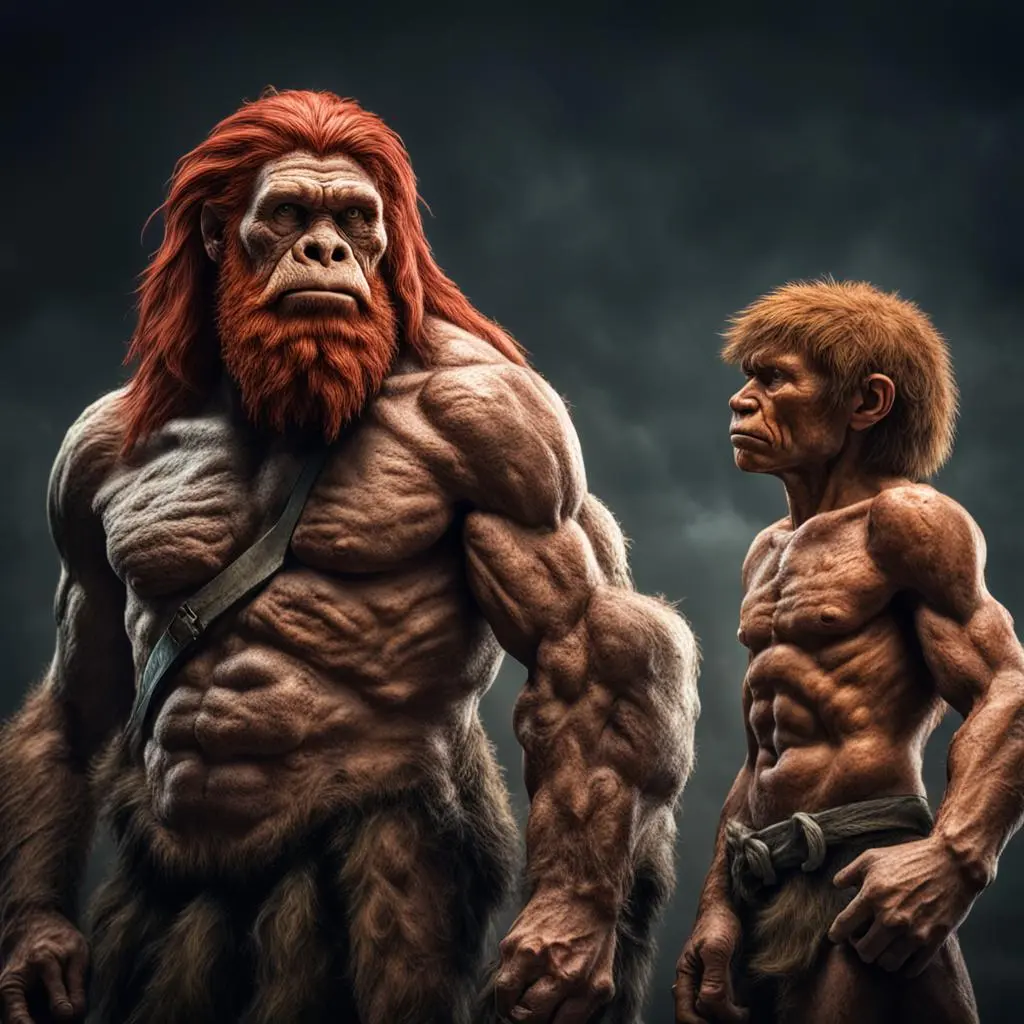
The idea of a connection between the White Giants and Neanderthals draws from the field of human origins and the ongoing research into our evolutionary past. Neanderthals were a distinct species of archaic humans who lived alongside our modern human ancestors, primarily in Europe and parts of Asia, until their eventual extinction around 40,000 years ago.
Potential Genetic Links and Archaeological Evidence
Recent advances in genetic analysis have revealed that modern humans carry traces of Neanderthal DNA, suggesting interbreeding between the two species during their coexistence. Intriguingly, some studies have identified higher levels of Neanderthal ancestry in certain Native American populations, particularly among those of North American descent.
This genetic evidence has fueled speculation about the possibility of Neanderthal presence in the Americas, a theory further bolstered by the discovery of archaeological artifacts and fossils that bear striking similarities to Neanderthal remains found elsewhere. Sites like the Calico Early Man Site in California and the Cerutti Mastodon Site in San Diego County have yielded controversial findings that challenge the traditional understanding of human origins and migration patterns.
Theories and Interpretations
The Neanderthal Hypothesis
Proponents of the Neanderthal hypothesis argue that the White Giant legends could be rooted in actual encounters between Native American ancestors and remnant populations of Neanderthals who may have migrated to the Americas during the late Pleistocene era. The physical descriptions of the White Giants, including their imposing stature, prominent brow ridges, and elongated skulls, align remarkably well with the known characteristics of Neanderthals.
Moreover, the depictions of the White Giants as formidable beings with exceptional strength and abilities could stem from the perception of Neanderthals as a distinct and physically superior group by the ancestors of modern Native Americans.
Alternative Explanations and Challenges
While the Neanderthal theory offers a compelling narrative, it is not without its critics and alternative interpretations. Some scholars argue that the White Giant legends may have originated from encounters with:
- European explorers and settlers: The pale skin and distinct features of the White Giants could be based on early interactions with European colonizers.
- Isolated groups or albinos: The stories could be based on encounters with other Native American groups or individuals with albinism, leading to exaggerated descriptions of their appearance.
Additionally, the lack of definitive archaeological evidence supporting a widespread Neanderthal presence in the Americas remains a significant challenge to the theory.
Cultural Implications and Debates
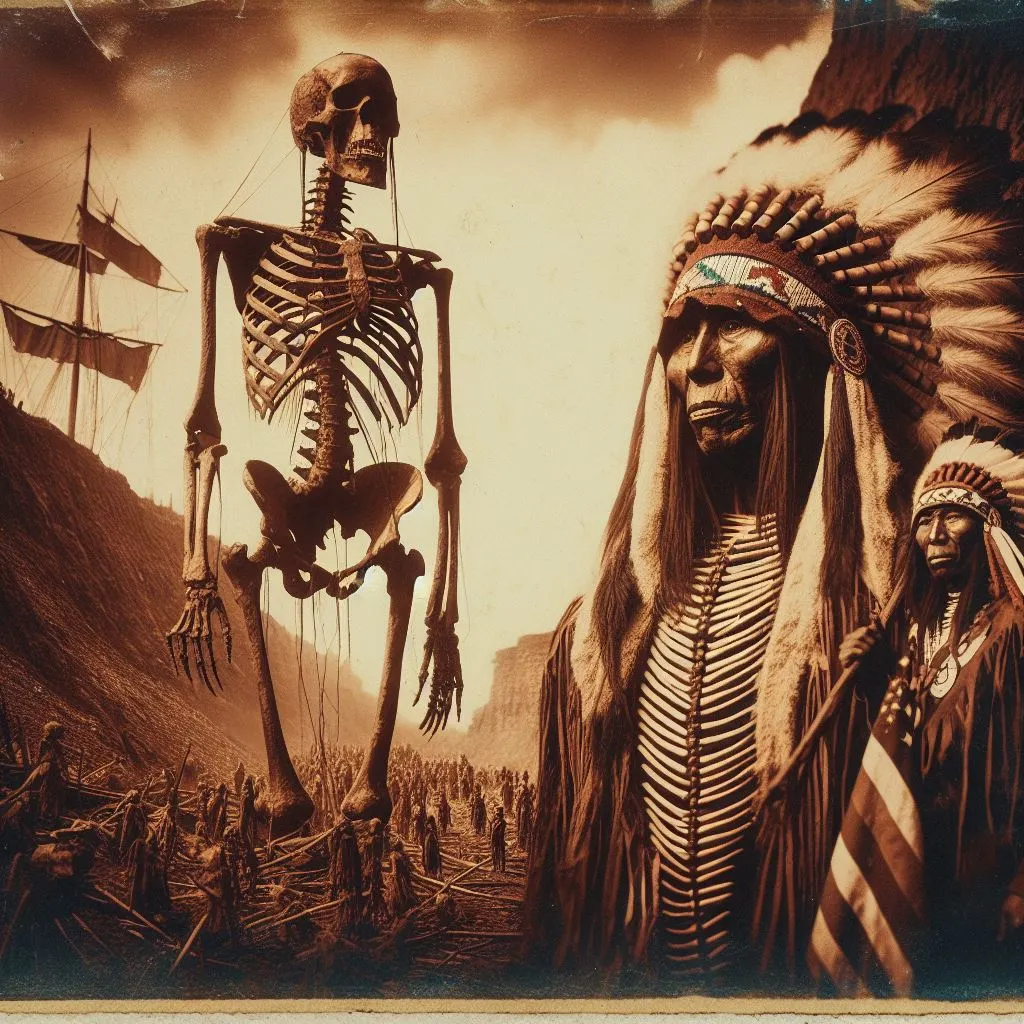
Significance in Native American Cultural Identity
The White Giant legends hold profound significance in the cultural identity and ancestral heritage of many Native American tribes. These narratives have been passed down through generations, serving as a vital link to the past and a source of pride and resilience in the face of adversity.
However, the introduction of the Neanderthal theory has sparked debates and controversies within indigenous communities.
While some embrace the possibility of Neanderthal ancestry as a testament to their deep-rooted connections to the land, others view it as a potential threat to their cultural autonomy and an imposition of Western scientific narratives.
Ethical Considerations and Respectful Dialogue
As researchers continue to explore the intersections of Native American traditions and scientific inquiries, it is crucial to approach these sensitive topics with respect, cultural sensitivity, and open dialogue.
Engaging with indigenous communities, seeking their perspectives, and fostering mutual understanding are essential to navigating the complexities surrounding the White Giant legends and their potential connections to Neanderthal ancestry.
FAQs
- What are the main characteristics of the White Giants described in Native American folklore?
- The White Giants were often portrayed as towering beings, sometimes over seven feet tall, with pale skin, robust builds, prominent brow ridges, and elongated skulls. They were depicted as possessing exceptional strength and, in some accounts, supernatural abilities.
- Is there evidence of Neanderthal presence in the Americas?
- While definitive archaeological evidence remains elusive, some controversial sites and artifacts have been proposed as potential indicators of Neanderthal presence in the Americas during the late Pleistocene era.
- How do the Neanderthal theory and Native American traditions align or conflict?
- The physical descriptions of the White Giants closely resemble the known characteristics of Neanderthals, lending credence to the theory of ancient encounters. However, some indigenous communities view the imposition of Western scientific narratives as a threat to their cultural autonomy.
- What are the potential implications of the Neanderthal theory for Native American cultural heritage?
- If the theory is validated, it could reinforce the deep-rooted connections between Native American ancestors and the land, while also raising questions about the origins and interpretations of certain cultural traditions.
- Are there alternative explanations for the White Giant legends?
- Alternative explanations include encounters with European explorers and settlers, or with isolated groups or individuals with albinism within Native American populations.
Conclusion
The enigmatic legends of the White Giants in Native American culture continue to captivate scholars and spark intense debates at the intersection of indigenous traditions and human evolution.
While the Neanderthal hypothesis offers a tantalizing explanation, linking these ancient narratives to our understanding of archaic humans and their potential migrations, it also raises complex questions and ethical considerations.
As we navigate this intricate tapestry of folklore, science, and cultural heritage, it is crucial to approach the subject with an open mind, respect for diverse perspectives, and a commitment to fostering respectful dialogue.
The pursuit of knowledge should never come at the expense of erasing or diminishing the rich tapestry of Native American cultures and their deep-rooted connections to the land and their ancestors.
Ultimately, the tales of the White Giants serve as a powerful reminder of the profound mysteries that still lie waiting to be uncovered, beckoning us to explore the boundaries of our understanding while honoring the wisdom and resilience of the indigenous cultures that have safeguarded these narratives for generations.
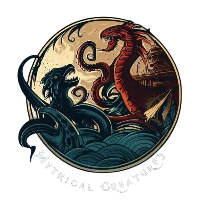
![Skinwalkers: Shapeshifting Witches in Navajo Folklore [Pics] 5 mythical creatures art Skinwalkers: Shapeshifting Witches in Navajo Folklore [Pics]](https://mythicalcreatures.blog/wp-content/uploads/2023/08/skinwalker-native-american-folklore-creature-concept-art-768x628.jpg)
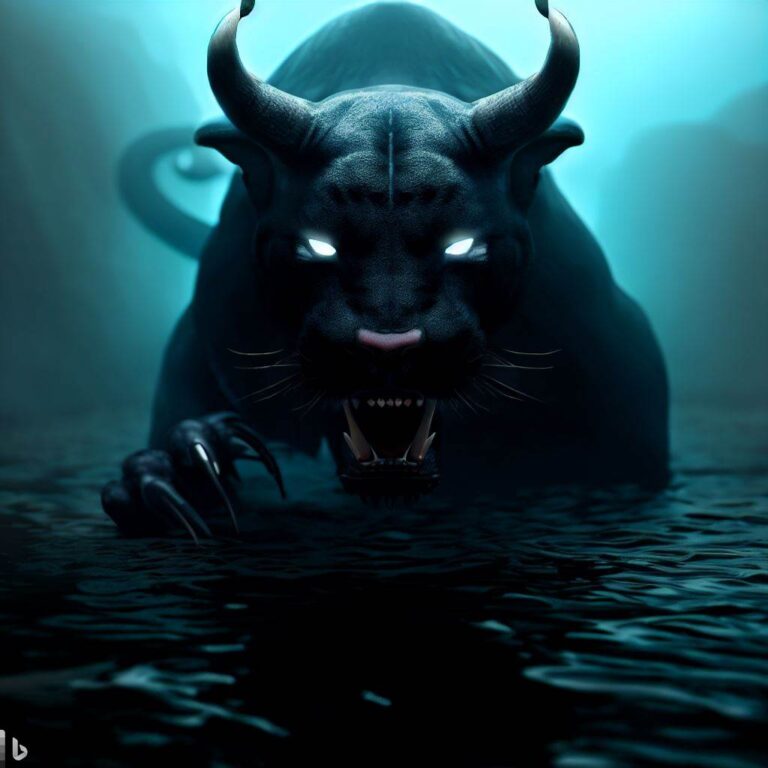

![The Differences Between Skinwalkers and Wendigos[Pics&Facts] 8 mythical creatures art The Differences Between Skinwalkers and Wendigos[Pics&Facts]](https://mythicalcreatures.blog/wp-content/uploads/2023/09/wendigo-vs-skinwalker-what-is-the-difference-768x382.jpg)
